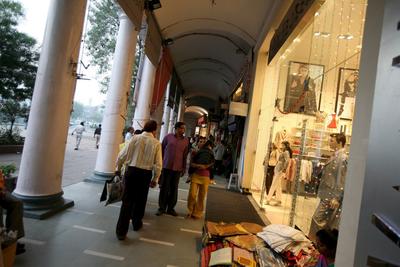Homi Kharas in this week’s lead essay, using the rigorous definitions of the middle class used by the OECD, observes that in East Asia over half a billion people are already members of an Asian middle class. As Kharas explains, economies in both East and South Asia have grown very fast for two decades now, and in some Asian countries (like Japan), growth has been sustained for much longer periods. Most East and South Asian economies have broken through the World Bank’s threshold of a per capita GDP of $1000 to become classified as middle income countries. But, as he cautions, that does not mean that they necessarily have a large middle class, at least not measured by international standards.
The global middle class is best defined by the spending of households, not the income that is available to the economy. ‘When households can afford small luxury items, when they can purchase consumer durables like cell-phones, cars, motorcycles, refrigerators, maybe own their house, enjoy vacations and leisure and afford to educate their children and to provide them with good health care, then, as Kharas points out, ‘they can be classified as members of a global middle class’. The rough definition of when this happens is when households spend at least $10/person/day in purchasing power parity terms. The middle class does not include the super-rich who don’t need to worry about how they spend their incomes and what the price of goods and services on which they spend them. That group can be defined as those who spend more than $100/person/day.
Using these definitions, close to one billion people have joined the middle class in Europe in the post-war period. Of the half a billion in Asia, roughly half are in the high income economies of Asia (Australia, Japan, Korea, Taiwan, Hong Kong, Singapore and New Zealand). The rest are in China, India and the rest of the emerging economies in Asia.
On conservative growth forecasts, Asia is predicted to add 2.5 billion people to the world’s middle classes in the next 20 years. The middle class in both China and India is growing at an extraordinary rate. Kharas points out that ‘If China is successful in its policy ambition to foster wage growth at least as fast as GDP growth, and if it continues to grow at its potential, its middle class could swell to fifty percent of its population in just 12 years. India’s middle class could rise even more rapidly because Indian households benefit more from Indian growth than do Chinese households, given the prevailing distribution of income’.
While the two Asian giants are obviously the most important drivers of the aggregate numbers of growth in the Asian middle class, the exciting possibility is that many large south and east Asian countries could enjoy the same kind of prosperity — Indonesia, Malaysia, Thailand, Cambodia, and Vietnam are poised to become predominantly middle class countries within a decade to fifteen years.
This is not only a startling economic fact, of immense importance in business and policy strategy, it is also important to understand the political change that will surely take place in Asia over the next decade or two.
Peter Drysdale

